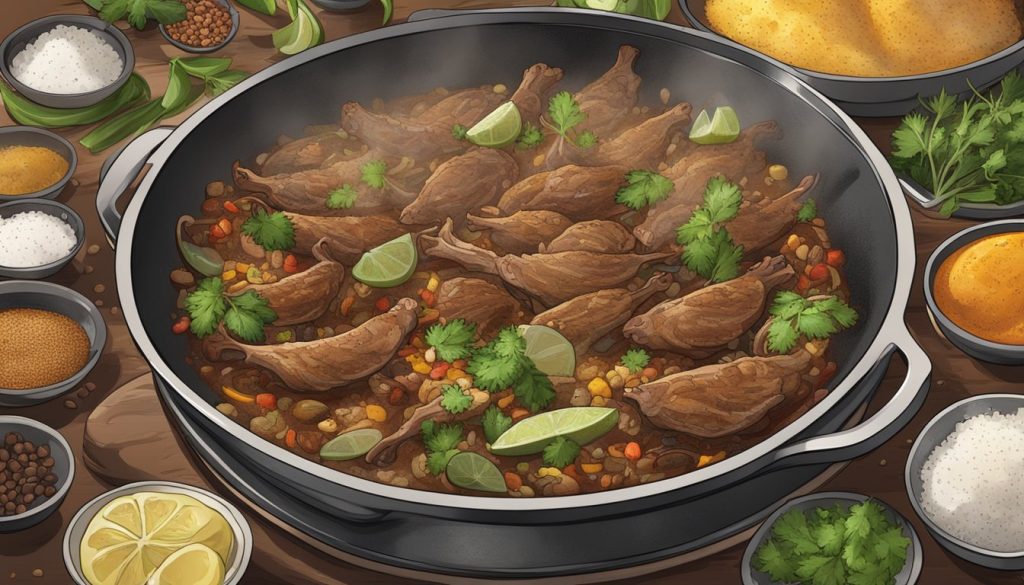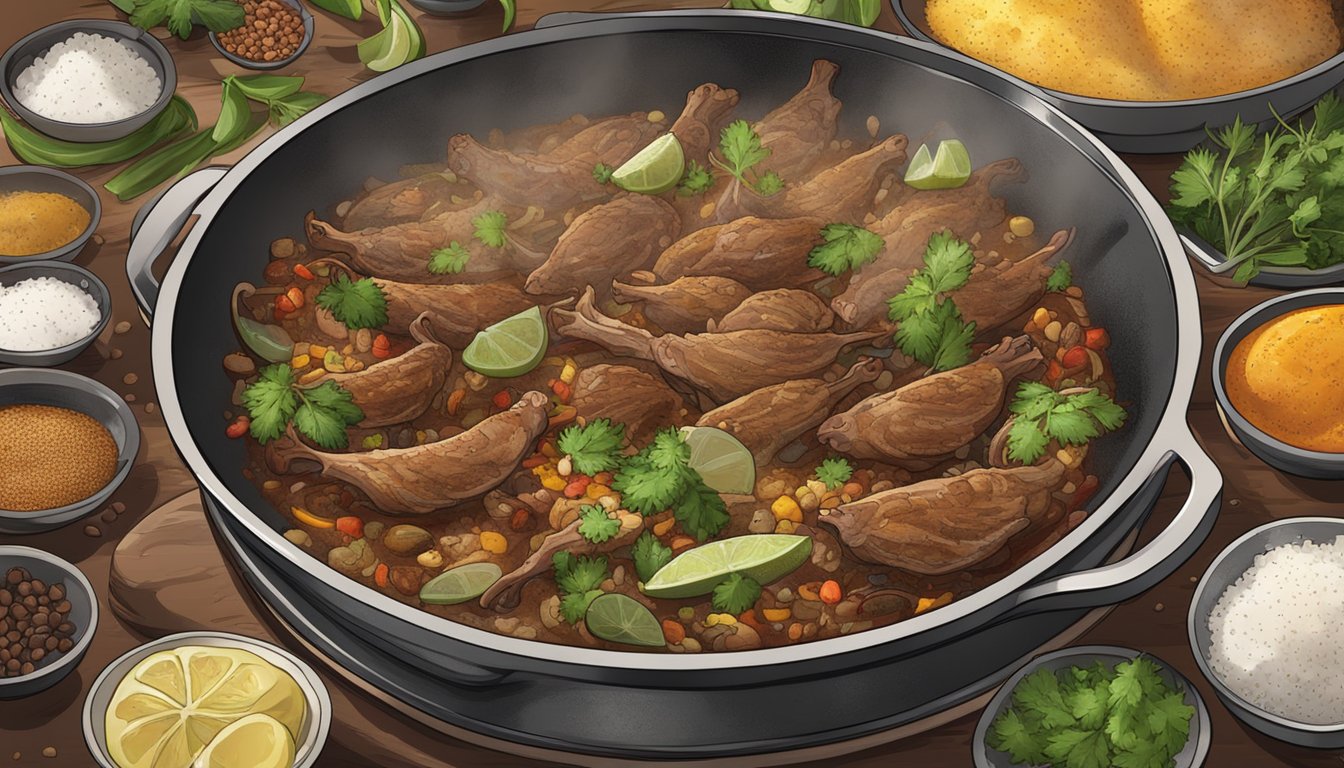Reheating carnitas doesn’t have to mean sacrificing flavor or texture. With the right techniques, leftover carnitas can be just as delicious as when freshly made. The key to successfully reheating carnitas is using methods that restore moisture while crisping up the edges.

Several effective approaches exist for bringing carnitas back to life. The oven method involves spreading the meat on a baking sheet and adding a splash of liquid before covering with foil. This helps retain moisture as the carnitas warm through. For those seeking a quicker option, the stovetop can yield excellent results when paired with a bit of oil to recreate that signature crispiness.
Regardless of the chosen method, attention to detail makes all the difference. Stirring occasionally ensures even heating, while adding fresh toppings after reheating preserves their vibrant flavors. With these tips in mind, anyone can transform leftover carnitas into a meal that tastes freshly prepared.
Understanding Carnitas
Carnitas is a traditional Mexican dish made from pork shoulder. The name translates to “little meats” in English, referring to the small, tender pieces of pork produced during cooking.
The meat is typically slow-cooked in lard or oil until it becomes incredibly tender. This process allows the pork to absorb flavors while retaining moisture.
After cooking, the pork is often shredded or chopped into smaller pieces. These pieces are then crisped up, creating a delightful contrast of textures – crispy on the outside, yet tender and juicy on the inside.
Key characteristics of carnitas include:
- Main ingredient: Boneless pork shoulder (also called pork butt)
- Cooking method: Slow-cooked, then crisped
- Texture: Tender and juicy with crispy edges
- Flavor: Rich, savory, and slightly salty
Carnitas are versatile in Mexican cuisine. They can be served in tacos, burritos, or as a standalone dish. The flavorful shredded pork pairs well with various toppings and sauces.
The high fat content of pork shoulder contributes to the rich taste and tender texture of carnitas. This cut of meat becomes incredibly flavorful and succulent when cooked slowly.
Preparation Before Reheating
Proper preparation is crucial for successfully reheating carnitas. Taking the right steps ensures food safety and optimal taste.
Food Safety and Storage
Store leftover carnitas in an airtight container in the refrigerator within 2 hours of cooking. Refrigerated carnitas remain safe to eat for 3-4 days. For longer storage, freeze carnitas in a freezer-safe container for up to 3 months.
Thaw frozen carnitas in the refrigerator overnight before reheating. Never thaw meat at room temperature, as this can promote bacterial growth.
If using refrigerated carnitas, let them sit at room temperature for 10-15 minutes before reheating. This allows for more even heating.
Always check that reheated carnitas reach an internal temperature of 165°F (74°C) using a meat thermometer to ensure safety.
Preheat Your Tools
Select the appropriate reheating method and preheat your tools. For oven reheating, preheat to 350°F (175°C). This ensures the carnitas heat evenly and quickly.
If using a skillet on the stovetop, choose a non-stick pan and heat it over medium-low heat while preparing the meat. This prevents sticking and promotes even heating.
For microwave reheating, select a microwave-safe dish. No preheating is necessary, but use a microwave-safe cover to prevent splatters and retain moisture.
Prepare any additional tools needed, such as tongs for handling the meat or aluminum foil for covering the carnitas in the oven.
Reheating Carnitas in the Oven
Reheating carnitas in the oven is an effective method to restore their crispy texture and savory flavor. This process ensures even heat distribution and helps retain moisture for juicy, flavorful meat.
Setting Up the Oven
Preheat the oven to 350°F (175°C). This temperature provides optimal heat for reheating carnitas without drying them out. Place an oven-safe baking dish on the middle rack for even heating.
Spread the leftover carnitas evenly in the baking dish. Avoid overcrowding to ensure each piece reheats thoroughly. If needed, use multiple dishes to maintain a single layer.
For extra crispiness, consider using a cast-iron skillet. Its heat retention properties can help achieve a golden-brown exterior.
Using Foil for Moisture Retention
Cover the baking dish with aluminum foil. This creates a barrier that traps steam, preventing the carnitas from drying out during reheating.
For best results, crimp the foil edges tightly around the dish. This seal helps lock in moisture and flavors.
Reheat the covered carnitas for 15-20 minutes. Carefully remove the foil and check the internal temperature. The meat should reach 165°F (74°C) for safe consumption.
For a crispy finish, remove the foil and broil for 2-3 minutes. Watch closely to prevent burning. Let the carnitas rest for a few minutes before serving to redistribute juices.
Reheating Carnitas on the Stovetop
The stovetop method offers a quick and effective way to reheat leftover carnitas while maintaining their crispy texture. This approach allows for precise control over heat and crispiness.
Using a Skillet or Frying Pan
Heat a skillet or frying pan over medium heat. Add a small amount of oil – olive oil or vegetable oil work well. Once the pan is hot, add the leftover carnitas in a single layer. Avoid overcrowding to ensure even heating.
Use tongs or a spatula to turn the meat occasionally. This promotes uniform heating and helps achieve a crispy exterior. Cook for 5-7 minutes, or until the carnitas are heated through and have developed a golden-brown crust.
If the carnitas seem dry, add a tablespoon of water or broth to the pan. This creates steam, helping to moisten the meat without making it soggy.
Maintaining Crispiness
To enhance crispiness, increase the heat slightly towards the end of cooking. Spread the carnitas out in the pan, allowing more surface area to contact the hot surface.
Avoid stirring too frequently, as this can prevent the formation of crispy edges. Instead, let the meat sit for 1-2 minutes between turns.
If the carnitas released grease during reheating, drain it off to prevent the meat from becoming greasy. For extra crispiness, press down gently with a spatula to increase contact with the pan.
Once heated and crisped to your liking, remove the carnitas from the pan immediately to prevent overcooking. Serve hot for the best texture and flavor.
Using a Slow Cooker or Sous Vide
Slow cookers and sous vide methods offer excellent options for reheating carnitas while maintaining moisture and tenderness. These techniques provide consistent, low-temperature heating that preserves the meat’s flavor and texture.
Slow Cooker Method for Tenderness
Place the leftover carnitas in the slow cooker and add a splash of cooking liquid or broth. This helps prevent the meat from drying out. Set the slow cooker to low heat and cook for 2-3 hours, stirring occasionally.
The gentle, moist heat of the slow cooker gradually warms the carnitas, ensuring they remain tender and juicy. This method works particularly well for larger portions of leftovers.
For best results, check the internal temperature of the meat. It should reach 165°F (74°C) to ensure food safety.
Sous Vide for Precise Temperature Control
Sous vide reheating offers precise temperature control, resulting in evenly heated carnitas. Start by setting the sous vide machine to 145°F (63°C).
Place the carnitas in a vacuum-sealed bag with a tablespoon of cooking liquid. If a vacuum sealer isn’t available, use the water displacement method to remove air from a zip-top bag.
Submerge the sealed bag in the preheated water bath for 30-45 minutes. This gentle reheating process preserves the meat’s moisture and tenderness.
After reheating, crisp the carnitas in a hot skillet for added texture if desired.
Alternative Reheating Methods
Microwaves and air fryers offer quick and convenient options for reheating carnitas. These methods can produce tasty results when used properly, preserving moisture and creating crispy textures.
Using the Microwave for Quick Reheating
Microwaving carnitas is the fastest method but requires care to prevent drying. Place leftover carnitas in a microwave-safe dish and cover with a damp paper towel. Heat in 30-second intervals, stirring between each, until the meat reaches 165°F (74°C). For crispier results, finish the reheated carnitas in a hot skillet for 1-2 minutes.
To retain moisture, add a tablespoon of water or broth before microwaving. This creates steam and helps keep the meat tender. Avoid overheating, as it can make the carnitas tough and rubbery.
Reheating Carnitas with an Air Fryer
Air fryers excel at restoring crispiness to leftover carnitas. Preheat the air fryer to 350°F (175°C). Arrange the carnitas in a single layer in the basket, avoiding overcrowding. Lightly mist with cooking spray for extra crispiness.
Cook for 3-4 minutes, shaking the basket halfway through. Check the internal temperature reaches 165°F (74°C). The hot circulating air creates a crispy exterior while maintaining a moist interior.
For larger portions, work in batches to ensure even heating. This method is ideal for those who prefer a crunchier texture in their reheated carnitas.
Serving Reheated Carnitas
Reheated carnitas offer versatile options for delicious meals. The crispy, flavorful pork can be used in various dishes or enjoyed on its own.
Assembling Tacos and Burritos
Warm corn or flour tortillas in a skillet or microwave for 10-15 seconds. Place a generous portion of reheated carnitas in the center of each tortilla. Add toppings like diced onions, chopped cilantro, and fresh salsa.
Squeeze lime juice over the meat for extra zest. For burritos, include rice and beans along with the carnitas. Roll tightly, tucking in the sides.
For a finishing touch, top tacos with crumbled queso fresco or shredded cheese. Serve immediately with additional salsa and lime wedges on the side.
Additional Meal Ideas with Leftovers
Transform leftover carnitas into nachos by layering tortilla chips with the meat, cheese, and jalapeños. Bake until the cheese melts, then add fresh toppings.
Create quesadillas by spreading carnitas and cheese between two tortillas. Cook in a skillet until golden and crispy.
For a hearty meal, serve carnitas over rice with black beans and avocado slices. Enchiladas are another option – roll carnitas in tortillas, cover with sauce and cheese, then bake.
Use carnitas as a topping for baked potatoes or mix into scrambled eggs for a flavorful breakfast.
Final Tips for Best Results
Mastering the art of reheating carnitas requires attention to detail and a few key techniques. These tips will help preserve the meat’s texture and enhance its flavors for a delicious second serving.
Avoiding Overcooking
Monitor the reheating process closely to prevent drying out the carnitas. Use a low temperature setting, around 250°F to 300°F, when reheating in the oven. This gentle heat allows the meat to warm through without becoming tough or stringy.
For stovetop reheating, keep the heat at medium-low and stir frequently. If using a microwave, heat in short 30-second bursts, checking between each interval.
Adding a splash of orange juice or cooking oil can help maintain moisture during reheating. This prevents the carnitas from sticking to the pan and keeps them juicy.
Enhancing Flavor
Reheating presents an opportunity to boost the carnitas’ taste profile. Sprinkle fresh cilantro and diced onions over the meat just before serving to add a bright, fresh element.
A squeeze of lime juice can awaken the flavors and cut through the richness of the pork. For those who enjoy heat, sliced jalapeños or a dash of hot sauce can provide a spicy kick.
Consider topping reheated carnitas with pico de gallo or guacamole for added texture and flavor. A dollop of barbecue sauce can introduce a smoky sweetness that complements the pork well.
Season with salt and freshly ground black pepper to taste, as flavors may have mellowed during storage. This simple step can make a significant difference in the overall taste of the reheated carnitas.
